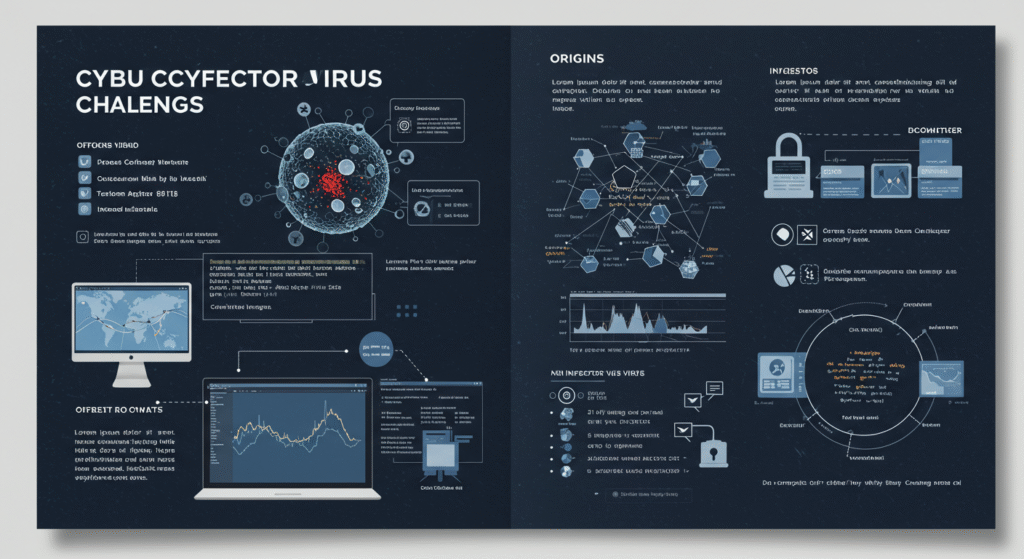The infector virus is one of the oldest and most persistent threats in the digital world. It refers to a type of malicious software designed to attach itself to legitimate programs or files, spreading from one system to another through execution. Once active, the infector virus can corrupt files, disrupt performance, steal data, or even make a system completely unusable. Over time, this form of malware has evolved from simple code fragments into complex, stealthy threats that challenge even the most advanced cybersecurity systems.
Understanding how an infector virus operates is crucial for individuals, businesses, and IT professionals. By learning its mechanisms, symptoms, and prevention strategies, users can better safeguard their digital environments from infection and data compromise.
What Is an Infector Virus?
An infector virus is a self-replicating program that modifies other executable files by inserting malicious code. When the infected file runs, the embedded virus code activates, executing its payload and spreading further. Unlike worms or trojans, infector viruses rely on user interaction to propagate — typically requiring the execution of an infected file.
There are different types of infector viruses, including file infectors, macro viruses, and boot sector viruses. Each variant targets specific system components or file types, but all share the same objective: replication and damage.
| Type of Infector Virus | Target Area | Common Symptoms |
|---|---|---|
| File Infector Virus | Executable files (.exe, .com) | Program corruption, slow startup |
| Macro Virus | Documents (Word, Excel) | Altered text, unwanted macros |
| Boot Sector Virus | Bootable drives | System crashes, boot errors |
How an Infector Virus Spreads
The spread of an infector virus often occurs through everyday computer activities. Downloading infected software, opening compromised email attachments, or using infected USB drives can all introduce the virus into a system. Once executed, the virus embeds itself into legitimate files, ensuring that every time the file runs, the malicious code executes too.
Common vectors of infection include:
-
Email attachments: Cybercriminals use phishing campaigns to trick users into opening infected documents.
-
Software downloads: Freeware or pirated software often hides infector viruses.
-
External devices: USB drives or external hard drives can transfer infected files between systems.
-
Network sharing: When connected devices share data, viruses can quickly propagate through local networks.
Modern infector viruses have become increasingly sophisticated, capable of bypassing antivirus detection and modifying system registries to ensure persistence.
Symptoms of an Infector Virus Attack
Recognizing the signs of an infector virus early can prevent widespread damage. Although symptoms vary by variant, several common indicators can help identify infections:
-
Unusual system behavior: Programs take longer to open, freeze, or crash unexpectedly.
-
File corruption: Executable files may become unreadable or fail to run.
-
Unexpected disk activity: The hard drive operates continuously even when idle.
-
Pop-up errors: Random system messages or security warnings may appear.
-
Network slowdown: Internet or local network speeds may drop due to background virus activity.
Monitoring these early warning signs allows users to isolate and remove the virus before it spreads further.
Impact of Infector Viruses on Systems
The consequences of an infector virus infection can range from minor disruptions to catastrophic data loss. For individuals, this may mean corrupted files or compromised personal information. For businesses, it can result in operational downtime, data breaches, and significant financial loss.
Some advanced infector viruses are designed to disable security systems or act as gateways for other forms of malware, such as ransomware or spyware. These multi-stage attacks can lead to long-term system compromise.
The table below outlines potential impacts of infector virus infections:
| Impact Area | Description | Potential Damage |
|---|---|---|
| System Performance | Slowed or unstable operations | Reduced productivity |
| Data Integrity | Corrupted or deleted files | Loss of critical information |
| Security Breach | Unauthorized access | Data theft, financial loss |
| Reputation | Loss of customer trust | Business credibility damage |
Prevention and Protection Against Infector Viruses
Preventing an infector virus requires a multi-layered security approach combining awareness, technology, and best practices. Here are key strategies for protection:
-
Use reliable antivirus software: Regularly update your antivirus and enable real-time scanning to detect and quarantine threats.
-
Avoid unverified downloads: Only download software from trusted sources and verify authenticity.
-
Be cautious with email attachments: Always scan attachments before opening, especially from unknown senders.
-
Regularly update your system: Operating system and software updates often include security patches that close vulnerabilities.
-
Backup data frequently: Maintain regular backups on external or cloud storage to recover data if infection occurs.
-
Disable macros: Prevent automatic execution of macros in documents to stop macro viruses from running.
Implementing these preventive measures reduces the risk of infection and limits potential damage if a virus does infiltrate the system.
Detection and Removal of Infector Viruses
Once an infector virus infiltrates a system, immediate action is required to minimize harm. Detection usually begins with antivirus scans or behavioral monitoring software. These tools identify suspicious activity, isolate infected files, and attempt removal.
Steps for virus removal include:
-
Disconnecting from the network to prevent further spread.
-
Running a full antivirus scan using updated virus definitions.
-
Quarantining infected files before deletion.
-
Restoring clean backups to replace damaged files.
-
Performing a system restore or reinstallation if the virus persists.
In corporate settings, cybersecurity teams often employ advanced tools like endpoint detection and response (EDR) systems to monitor real-time threats and automate removal.
Future of Infector Virus Threats
The infector virus continues to evolve as technology advances. With artificial intelligence, machine learning, and cloud computing expanding rapidly, cybercriminals are finding new methods to embed viruses in complex systems. Modern infector viruses can modify their code signatures to avoid detection — a technique known as polymorphism.
Cybersecurity researchers are developing next-generation tools that use AI-driven anomaly detection and behavioral analysis to identify such stealthy threats. In the future, proactive defense will rely more on predictive algorithms than traditional antivirus models.
Conclusion
The infector virus remains one of the most resilient and dangerous forms of malware in the digital era. Its ability to replicate, spread through legitimate files, and evade detection makes it a persistent threat to individuals and organizations alike. Understanding its nature, symptoms, and methods of prevention is essential to maintaining secure and reliable computing environments.
By adopting smart cybersecurity practices, staying informed about evolving threats, and leveraging modern protective tools, users can minimize their vulnerability to infector virus attacks and ensure long-term system safety.







